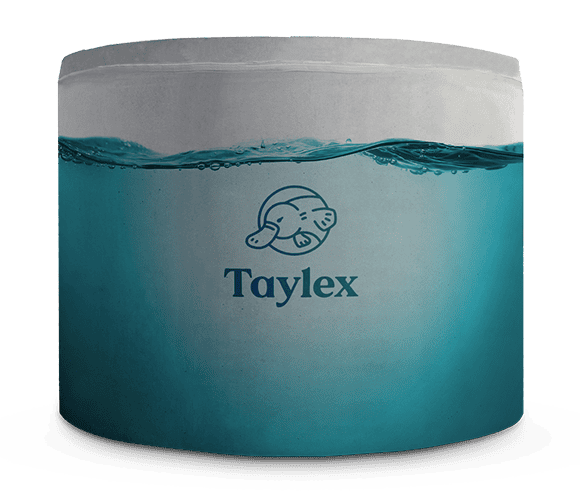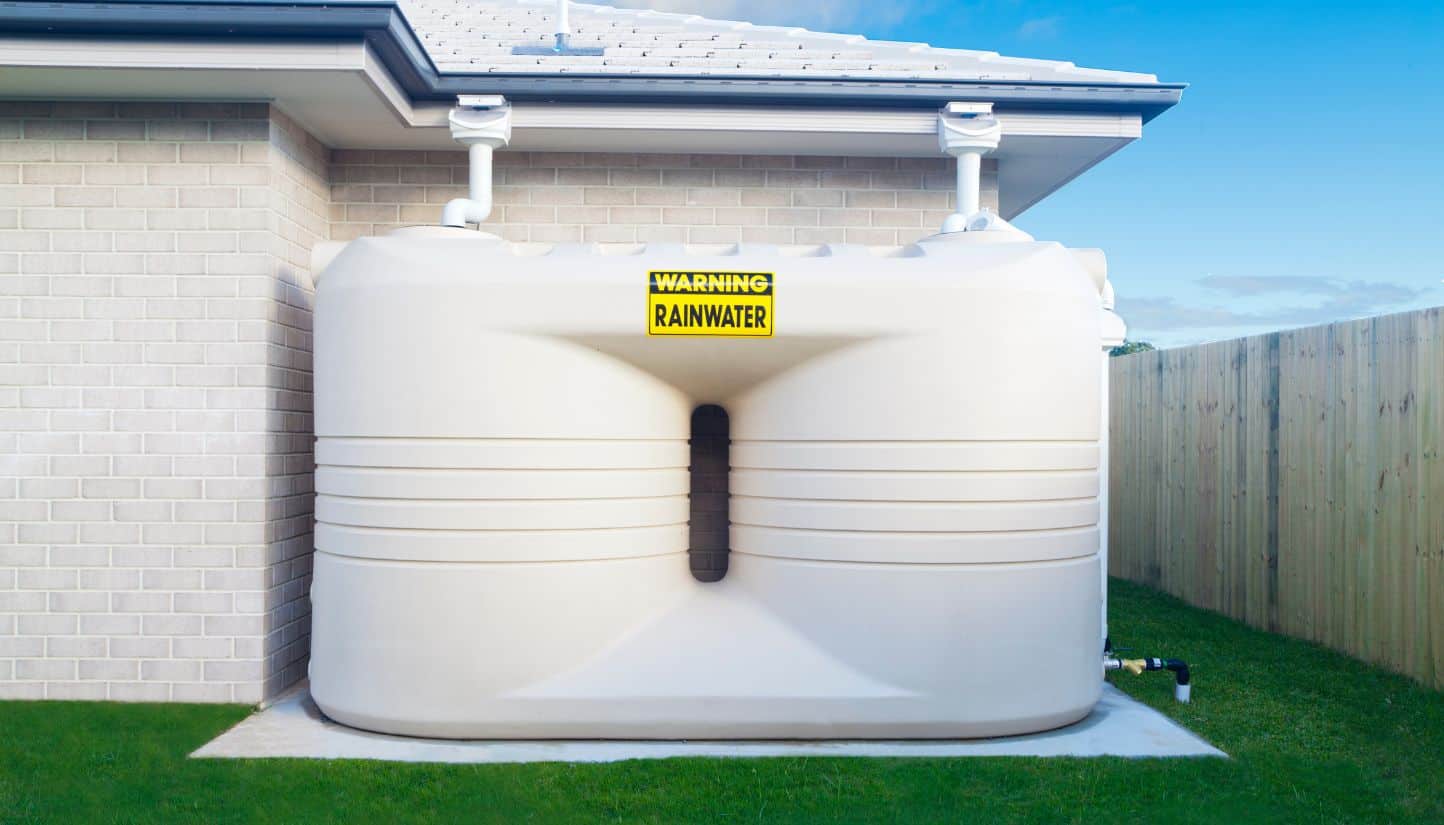
What size water tank do I need? It’s a question many homeowners consider when looking to harvest rainwater efficiently. Selecting the ideal tank size is essential for maximising water savings and ensuring a reliable supply during dry spells. A well-chosen tank not only meets your household’s water needs but also helps conserve the environment by reducing dependence on mains water.
To help you cope with the process of choosing the right tank size, we’ll consider various factors including your roof area, local rainfall patterns, and household water consumption. Read on to discover how to make a well-informed decision about which rainwater tank is best for your needs.
Why Choosing the Right Size Matters
The capacity of your water tank directly impacts your ability to collect and store rainwater for household use. Choosing an appropriately sized tank ensures you have enough water to get through dry periods without investing in an unnecessarily large tank.
Now that you understand why size matters, let’s explore how to determine the best tank size for your needs.
Cost Saving and Water Security
Choosing the right tank size can lower your water bills by maximising your use of rainwater. It guarantees a steady water supply during emergencies, ensuring you’re never caught without water when needed.
Environmental Impacts and Sustainability
Australia often faces water shortages, so efficient water management is crucial. The right water tank size helps you manage water sustainably by reducing reliance on mains water, promoting eco-friendly living, and conserving water resources.
With the importance of choosing the right size clearly outlined, let’s dive into the specifics of how you can select the ideal water tank for your home.
How To Choose The Right Water Tank Size
There are several factors to consider when choosing the right rainwater tank size for your needs:
1. Determine Your Water Needs
The first step in selecting the right tank size is understanding your household’s water consumption.
Household Size And Daily Water Usage
Start by reviewing your water bills to understand your current consumption. Alternatively, you can calculate your daily water use based on the number of occupants and their average usage. A general guideline is to assume 150 litres per person per day. For a more accurate estimate, use an online water usage calculator.
Seasonal Variations and Emergency Situations
Water usage can increase during periods of drought or dry spells. A larger tank can serve as a buffer in these times. It is advisable to choose a tank that can store enough water to cover at least a few weeks of usage during such periods.
Having discussed how to determine your water needs, let’s consider your potential for collecting rainwater.
2. Assess Your Rainwater Harvesting Potential
Evaluate the amount of rainwater you can collect based on your roof size and the local climate.

Roof Catchment Area
The size of your roof determines how much rainwater you can gather. Typically, 1 square metre of roof space collects approximately 1 litre of water per millimetre of rainfall. Ensure your roof setup is optimised for maximum collection.
Climate And Rainfall Patterns
To accurately estimate your potential rainwater harvest, it’s essential to understand the local rainfall patterns. Areas with consistent year-round rainfall might require smaller tanks due to a steady water supply. Conversely, regions with distinct wet and dry seasons usually require larger tanks to bridge water shortages during drier periods.
You can visit Australia’s Bureau of Meteorology website for precise data on your location’s rainfall.
3. Tank Location And Space Availability
Consider the tank’s placement and available space. Slimline tanks suit narrow areas, while round tanks fit better in larger areas. Ensure the selected location allows for easy installation and maintenance.
4. Budget And Cost Considerations
Your budget will influence the size and type of tank you can afford. Larger tanks offer more water security but also come with higher initial costs. It’s important to balance your needs with what you can reasonably afford.
5. Local Regulations and Council Requirements
Review local council regulations. Some areas may have specific requirements for tank size, placement, and installation, especially in bushfire-prone regions or for new constructions. Ensure your tank complies with all guidelines to avoid any legal issues.
Now that we’ve covered the practical steps and considerations, let’s look at how you can calculate the appropriate size for your water tank.
How To Calculate Water Tank Sizes

Using Online Water Usage Calculators
Online water usage calculators are a convenient way to estimate the right tank size for your needs. These tools consider household size, daily water consumption, and local rainfall patterns to provide a tailored recommendation. Simply input your data, and the calculator will suggest an appropriate tank size to ensure you have enough water throughout the year.
While convenient, remember that these calculators provide rough estimates and may not account for all variables specific to your situation.
Manual Calculation Methods
You can also calculate your rainwater harvesting potential manually using a few simple formulas:
1. Estimating Annual Water Usage
Calculate your household’s daily water usage and multiply by 365 days to get the annual consumption. For instance, a family of four using 500 litres per day will need about 182,500 litres a year.
Annual Water Usage = Daily Usage x 365
Example: 500 litres/day x 365 days = 182,500 litres/year
Note: Actual usage varies. Check your water bills or local water authority estimates for accurate figures.
2. Assessing Rainwater Harvesting Potential
Use your roof area and local average rainfall to estimate how much rainwater you can collect annually. Assuming a roof area of 100 m² and annual rainfall of 500 mm, you might collect approximately 45,000 litres a year, adjusting for a runoff coefficient.
Rainwater Harvested = Roof Area x Rainfall x Runoff Coefficient
Example: 100 m² x 500 mm x 0.9 = 45,000 litres/year
Note: The runoff coefficient accounts for losses due to evaporation and inefficiencies. Use 0.9 for a metal roof and 0.8 for a tiled roof.
Tip: Obtain annual rainfall data from local meteorological services or government websites.
3. Determining Appropriate Tank Size
Subtract the rainwater harvested from your annual usage to find out how much storage you need.
Required Tank Size = Annual Usage – Rainwater Harvested
Example: 182,500 litres – 45,000 litres = 137,500 litres
These calculations provide a great starting point. However, consult professionals for precise tank sizing tailored to your needs and conditions. They can consider factors like local regulations, site layout, and water usage patterns to help you determine the optimal tank size and system design.
Consult with Professionals For Expert Guidance
Determining the right rainwater tank size is complex and best left to professionals. DIY tank selection can be overwhelming and may result in a tank that’s too small or too large, costing you time and money.
Professionals can accurately assess your needs based on the roof area, local rainfall, household usage, and space constraints. Their guidance ensures compliance with local regulations and helps avoid costly mistakes. Rainwater tanks are a significant investment, and professional advice guarantees you the most efficient system for your property.
Contact a Taylex expert today for personalised advice tailored to your specific needs!
Taylex: Your Partner in Choosing the Best Water Tank
Selecting the right rainwater tank can be overwhelming. Let Taylex simplify the process. Experience the difference with our high-quality concrete rainwater tanks designed for Australian conditions. We ensure durability and reliability in every tank through rigorous quality testing and adherence to industry standards. From sizing and installation to maintenance, we’re here to guide you every step of the way.
By choosing Taylex, you’re not just investing in a tank but in a sustainable water solution that reduces your reliance on mains water and helps manage stormwater runoff. Trust us for a reliable rainwater solution that saves you money and water.
Contact us today for a free consultation on selecting the perfect rainwater tank for your property!
What Size Water Tank Do I Need FAQs
Should I Use One Large Tank or Multiple Smaller Tanks to Capture My Rainwater?
Using one large tank is often more cost-effective and easier to maintain, but multiple smaller tanks can offer flexibility in placement, especially in narrow spaces or areas with limited access. Assess your space availability and water needs to decide the best option.
What Size Water Tank Do I Need for a Family of 4?
An average size water tank for a family of 4 is at least 15,000 litres. However, for a more reliable water supply, especially during periods of high usage or dry spells, it is ideal to have a larger tank capacity of 22,500 to 30,000 litres.
What Size Water Tank Do I Need for My House?
As a general rule of thumb, a water tank that can hold around three times your monthly water consumption is a reasonable choice. It ensures you have ample storage for both daily use and emergencies.
How to Calculate The Size of a Water Tank Needed?
To determine the appropriate water tank size, you can use a simple formula:
Roof area (in square metres) x Average rainfall (in millimetres) = Potential water collection (in litres)
This calculation will provide a baseline for the tank size you may require, allowing you to decide based on your specific water usage and storage requirements.
What Size Water Tank for 2 People?
The recommended average water tank size for a household of 2 people is about 90,000 litres. This size allows for sufficient water storage to meet the daily needs of a small family, ensuring a reliable and sustainable water supply throughout the year.
Is a 1000 Litre Water Tank Enough?
A 1,000-litre water tank is generally too small for most households. It’s suitable for small-scale use, like gardening, but not for meeting the daily water needs of an average household.